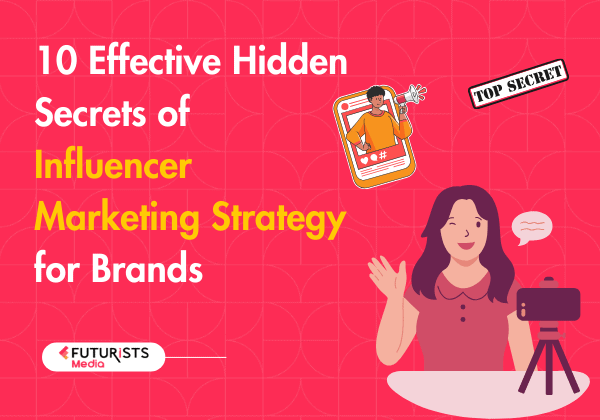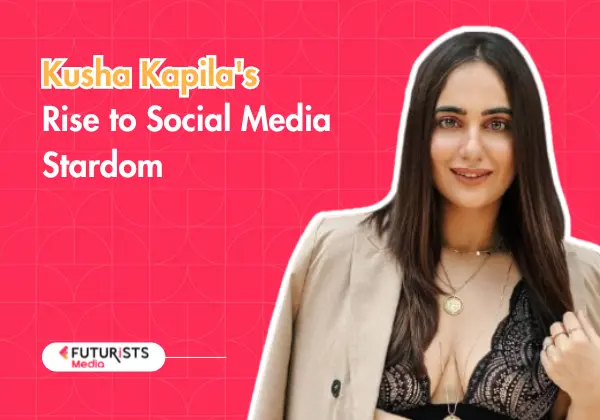Influencer marketing has become an essential strategy for brands looking to establish strong online visibility and drive consumer engagement. The shift from traditional advertising to digital platforms has made influencers key players in brand awareness and sales growth. However, while many brands leverage influencer marketing, few truly unlock its full potential.
The secret to a successful influencer marketing strategy for brands lies in exploring underutilized strategies that go beyond simply collaborating with big-name influencers. By tapping into lesser-known tactics, brands can optimize their influencer partnerships, enhance authenticity, and achieve higher returns on investment (ROI). In this comprehensive guide, we will uncover hidden secrets that can elevate your influencer marketing strategy and give your brand a competitive edge.
Unveiling the Hidden Secrets of Influencer Marketing Strategy for Brands
Understanding Influencer Marketing Strategy
Influencer marketing is more than just collaborating with popular social media figures—it’s a structured approach that involves identifying the right influencers, creating compelling content, and measuring the impact on brand performance. Key components of an effective influencer marketing strategy include:
- Influencer Selection: Choosing influencers who align with brand values and audience demographics.
- Content Strategy: Developing engaging and authentic content that resonates with audiences.
- Campaign Goals & KPIs: Setting measurable objectives such as brand awareness, engagement, or conversions.
- Performance Tracking: Using analytics to assess effectiveness and make data-driven optimizations.
Emerging Trends in Influencer Marketing (As of 2024)
The influencer marketing landscape continues to evolve, and staying updated on new trends is essential. Some of the latest trends include:
- AI-Powered Influencer Selection: Brands are using artificial intelligence tools to analyze influencer credibility, audience engagement, and campaign effectiveness.
- Rise of Virtual Influencers: Computer-generated influencers are gaining traction, offering brands controlled messaging with consistent branding.
- Greater Focus on Niche Audiences: Micro and nano-influencers are becoming preferred choices due to their highly engaged and loyal followers.
- Diversification of Platforms: New social platforms like Clubhouse, BeReal, and niche forums are providing fresh opportunities for influencer collaborations.
- Emphasis on Authenticity & Transparency: Consumers are demanding more transparency in influencer-brand partnerships, leading to more genuine content strategies.
Top 10 Hidden Secrets to Elevate Your Influencer Marketing Strategy
1. Leveraging Micro-Influencers for Authentic Engagement

Micro-influencers (with 10k-100k followers) often have a more engaged audience compared to macro-influencers or celebrities. Their niche focus allows for targeted marketing, resulting in higher conversion rates. Brands should:
- Prioritize engagement rates over follower count.
- Build relationships with micro-influencers who genuinely resonate with the brand.
- Utilize multiple micro-influencers instead of a single macro-influencer to reach diverse audience segments.
2. Utilizing Data Analytics to Identify Optimal Influencers

Follower count alone does not guarantee success. Brands should use advanced analytics tools to assess:
- Engagement metrics (likes, comments, shares, click-through rates).
- Audience demographics (age, location, interests).
- Authenticity scores (to avoid fake followers and bots).
- ROI tracking for influencer campaigns.
3. Crafting Collaborative Content for Enhanced Authenticity

Instead of dictating content, brands should co-create campaigns with influencers. This approach ensures:
- Content that blends naturally with the influencer’s usual posts.
- Higher trust and engagement from the influencer’s audience.
- More creativity and unique storytelling tailored to the audience.
4. Exploring Emerging Platforms for Untapped Audiences

While Instagram and TikTok dominate influencer marketing, emerging platforms like:
- Clubhouse & Twitter Spaces (audio-based engagement).
- LinkedIn Influencers (for B2B brand partnerships).
- Discord Communities (for niche engagement).
- Reddit AMA Collaborations (for authentic audience interaction).
5. Implementing Long-Term Partnerships Over One-Off Campaigns
One-off collaborations often feel transactional. Long-term influencer partnerships:
- Build sustained brand credibility.
- Create a consistent brand narrative.
- Develop strong influencer-brand relationships that lead to more organic promotion.
6. Encouraging User-Generated Content Through Influencer Initiatives

User-generated content (UGC) expands reach organically. Brands should:
- Create branded hashtag challenges.
- Encourage influencers to ask followers to share experiences.
- Reward the best UGC with giveaways or feature shoutouts.
7. Leveraging Influencer Insights for Product Development

Influencers have direct access to consumer preferences. Brands should:
- Engage influencers in beta testing and feedback sessions.
- Use influencer insights for product improvements.
- Co-create exclusive influencer-branded product lines.
8. Utilizing Storytelling to Humanize the Brand

Consumers connect more with emotions than direct advertisements. Brands should:
- Encourage influencers to share personal experiences with products.
- Use storytelling formats like vlogs, day-in-the-life, and testimonial-style videos.
- Promote behind-the-scenes content to build authenticity.
9. Monitoring Competitor Collaborations for Strategic Insights

Studying competitor influencer strategies helps in:
- Identifying successful tactics to replicate.
- Spotting collaboration gaps for unique positioning.
- Learning from failed campaigns to avoid similar pitfalls.
10. Ensuring Compliance with Advertising Regulations

With increasing scrutiny over influencer marketing, brands must:
- Ensure influencers disclose paid partnerships (#ad, #sponsored).
- Stay updated on regional guidelines (FTC, ASCI, etc.).
- Maintain transparency to avoid credibility loss.
Measuring the Impact of Your Influencer Marketing Efforts
Success in influencer marketing depends on continuous tracking and optimization. Brands should focus on:
- Engagement Metrics: Likes, comments, shares, and video watch time.
- Conversion Rates: Click-through rates, purchases, and lead generation.
- Brand Awareness: Growth in brand mentions and social media following.
- ROI Analysis: Comparing investment vs. revenue generated through influencer campaigns.
Future Trends in Influencer Marketing Strategies
The future of influencer marketing will see:
- AI-Driven Influencer Marketing: AI tools for influencer matching and performance prediction.
- Expansion of Virtual Influencers: More CGI-created influencers collaborating with brands.
- Diversity & Inclusion Focus: More representation of diverse voices and communities.
- Sustainable & Ethical Marketing: Partnering with influencers advocating sustainability.
- Decentralized Content & Blockchain Tech: Web3-based brand collaborations.
Conclusion
Influencer marketing is no longer just about paying celebrities to endorse products—it’s a powerful tool that, when used strategically, can drive substantial brand growth. By implementing the hidden secrets discussed in this guide, brands can optimize their influencer marketing strategies for better engagement, credibility, and ROI. As the landscape evolves, staying adaptable and informed will be the key to long-term success in influencer marketing.
Now it’s your turn—start leveraging these influencer marketing secrets to elevate your brand’s success!







